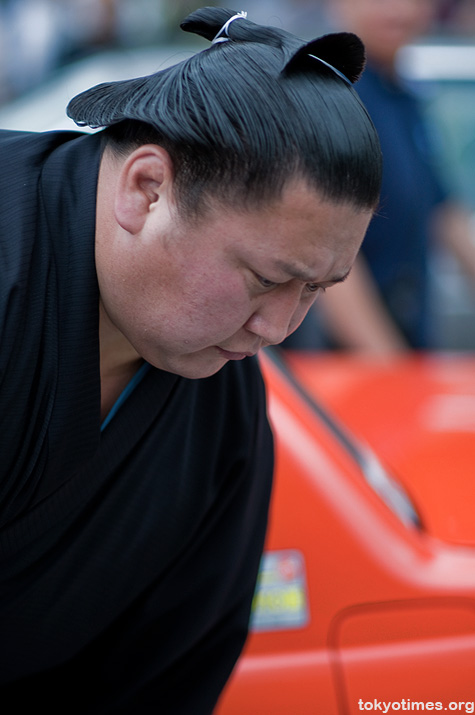
The restaurants in the Ryogoku area of Tōkyō, known as “Sumo Town” because it’s the home of the Japan Sumo Association, are particularly popular. It comes in a number of different flavours including salt, soy sauce, miso, kimchee and more. You can eat chankonabe at restaurants throughout Japan.
#ARE SUMO WRESTLERS HEALTHY FULL#
In case they aren’t full after the goodies are eaten and there’s just soup left, the sumo often dump a pile of noodles into the bowl. The stew is full of fresh veggies, tofu, fish and either pork, chicken or beef. It’s not your triple Whopper or deep-fried pizza. Chankonabe: The choice of sumoĪlthough hearty, chankonabe is actually quite healthy. Morning ready to smash their bodies against each other. They sleep, the day’s protein and calories work their magic and they wake up in the early Dinner and lights outĪt the end of the day, sumo wrestlers eat another massive meal and call it a night. How could you not pass out after a meal like that? Sumo wrestlers take a siesta for as long as 4 hours after lunch, in order to slow down their metabolism and add everything they just ate to their girth.

#ARE SUMO WRESTLERS HEALTHY FREE#
Learning kanji? Here is a free guide with top kanji learning tools! Take a siestaĪfter lunch, there’s one more essential bit of training-the nap. A healthy rikishi (力士, sumo wrestler) may down as many as 6 pints during the midday meal. To complement their mighty meal, sumo wrestlers eat around 5–10 bowls of rice and copious amounts of beer, required for empty calories. Nabe (鍋) is a traditional Japanese stew, but chankonabe is the supersized version, stuffed full of extra everything for the sole purpose of providing calories. This is a stew filled with fish, vegetables, meat and tofu.

It sounds a little like ‘chunk nabe,’ which is somehow oddly appropriate. The main dish that sumo wrestlers eat is a stew called chankonabe (ちゃんこ鍋). It also gets them hungry enough for that 10,000-calorie lunch. Skipping breakfast and working out instead slows down the wrestler’s metabolism, so they usually don’t eat until around 11am. Here is a typical sumo wrestler daily eating schedule: Skip breakfastĪ sumo wrestler’s day starts at four or five o’clock in the morning with training and exercise. The sumo’s diet is an expression of my favorite Japanese cultural trait-never doing things halfway. They eat 10 times what a normal male eats and all of it’s done in two massive 10,000-calorie meals. Eating is an essential part of their training.Ī typical sumo wrestler eats a daily diet of 20,000 calories, which is pretty astounding when you consider that the recommended daily intake for a healthy, active male is 2,500. This means that it takes not only strength and flexibility to be a sumo-it also takes the right diet. The ideal weight for a sumo wrestler is anything from 400 to 600 pounds. The truth is that it’s not just flab that makes a sumo wrestler’s girth there’s a whole lot of muscle underneath it all. It’s ironic that the national sport of Japan-whose inhabitants are some of the skinniest and most gentle in the world-involves two overweight men trying to shove each other out of a ring.


 0 kommentar(er)
0 kommentar(er)
